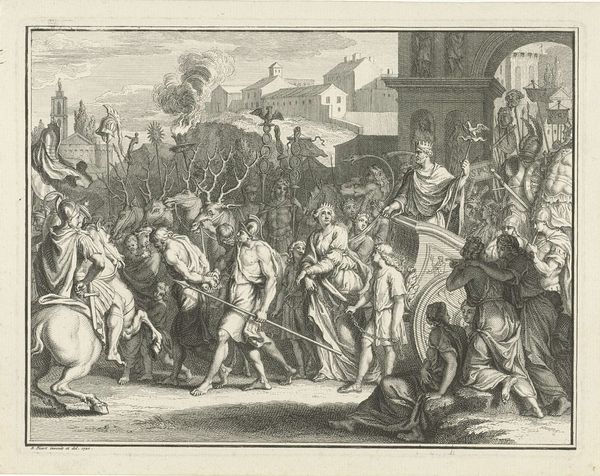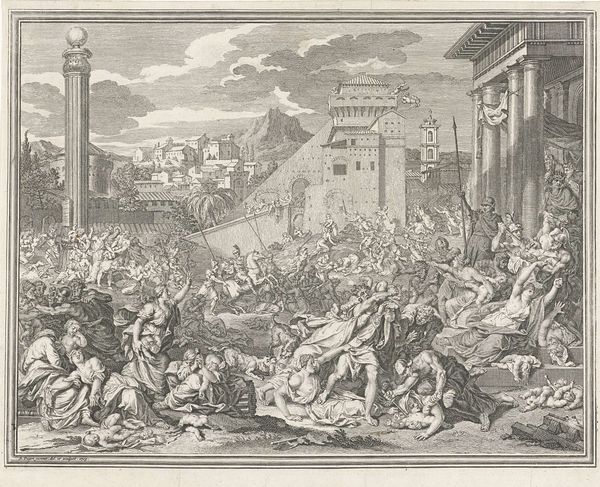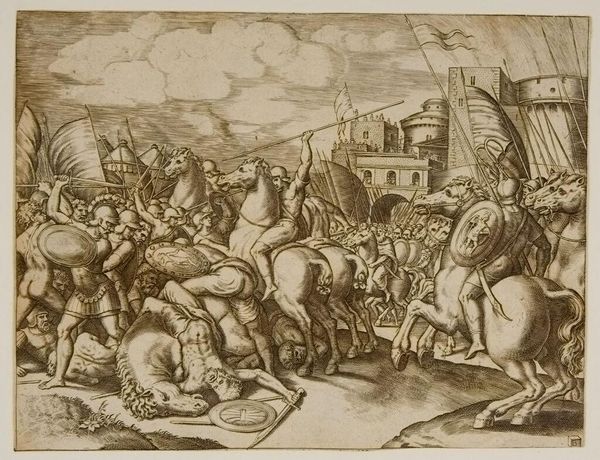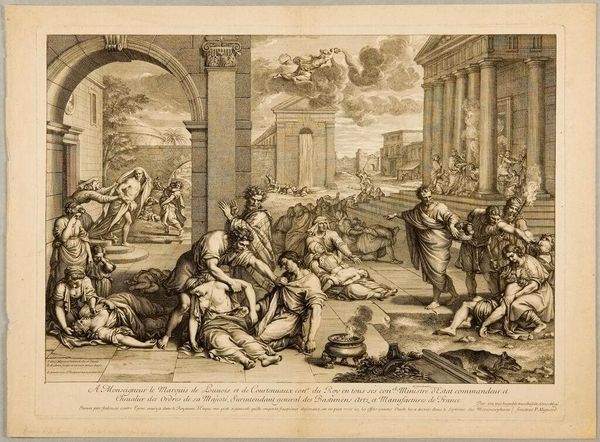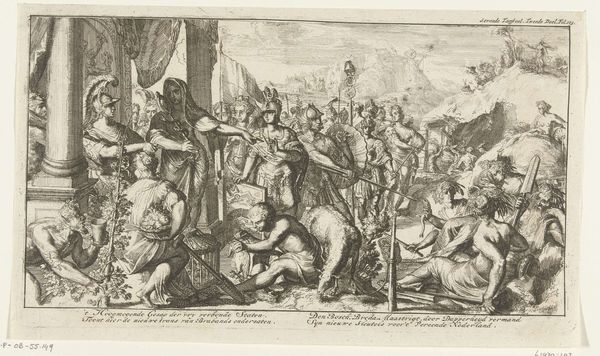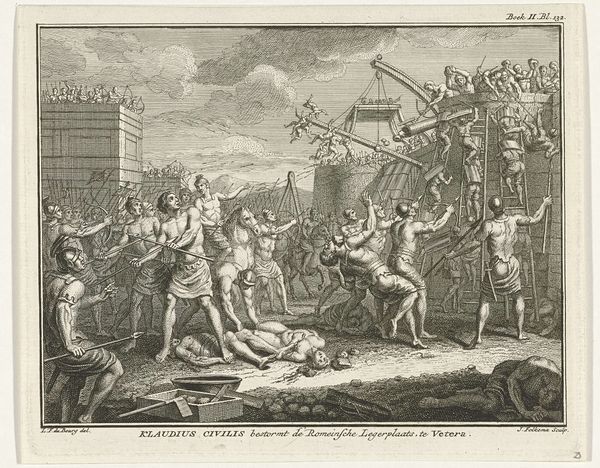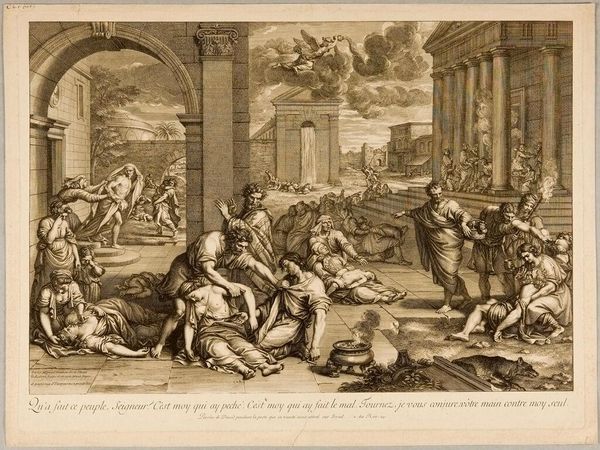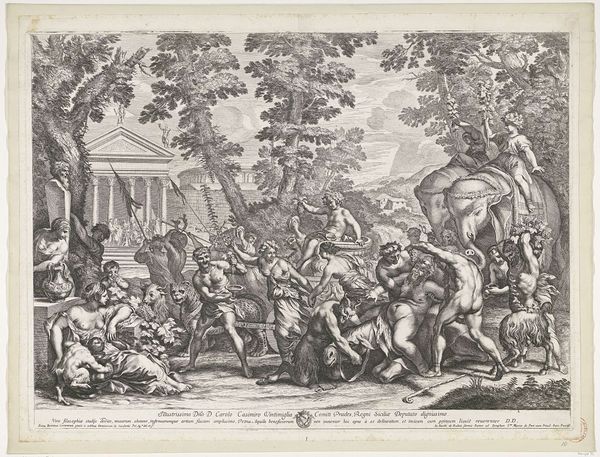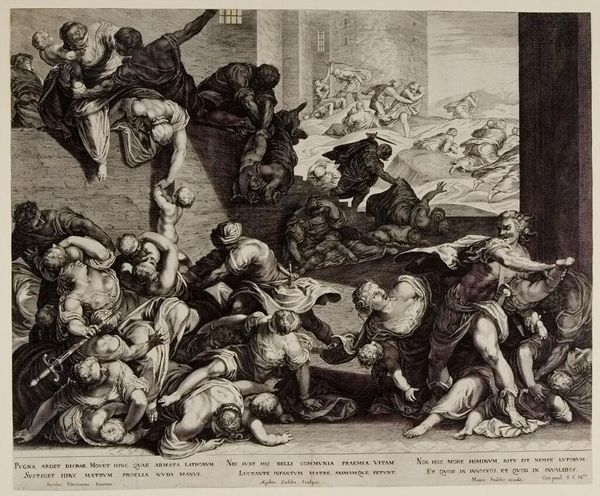
The Rape of the Sabines 17th-18th century
Dimensions: Image: 40.5 Ã 55 cm (15 15/16 Ã 21 5/8 in.) Sheet: 45.5 Ã 57 cm (17 15/16 Ã 22 7/16 in.)
Copyright: CC0 1.0
Curator: Jean Audran, who lived from 1667 to 1756, created this print titled "The Rape of the Sabines," now in the Harvard Art Museums. It's quite a dynamic scene. Editor: Chaotic, I'd say. It really captures a moment of upheaval, doesn't it? So much implied violence. Curator: Absolutely. Audran was a master engraver, known for translating large-scale paintings into prints. The composition is deliberately theatrical, drawing the viewer into the center of the conflict. Editor: The title itself, "The Rape of the Sabines," is problematic. It normalizes sexual violence, framing it as an act of nation-building. The forced abduction and subsequent assimilation of these women erases their identity and agency. Curator: That's a crucial point. The Roman narrative often glosses over the violence inherent in this foundational myth, focusing instead on the eventual reconciliation and union of the Romans and Sabines. Editor: It is a great example of how historical context shapes our understanding of art. By acknowledging the ethical implications, we can start deconstructing harmful narratives perpetuated through art. Curator: I agree; that added perspective transforms our view of this historical artwork. Editor: Exactly. It's about disrupting the status quo and challenging historical narratives.
Comments
No comments
Be the first to comment and join the conversation on the ultimate creative platform.
